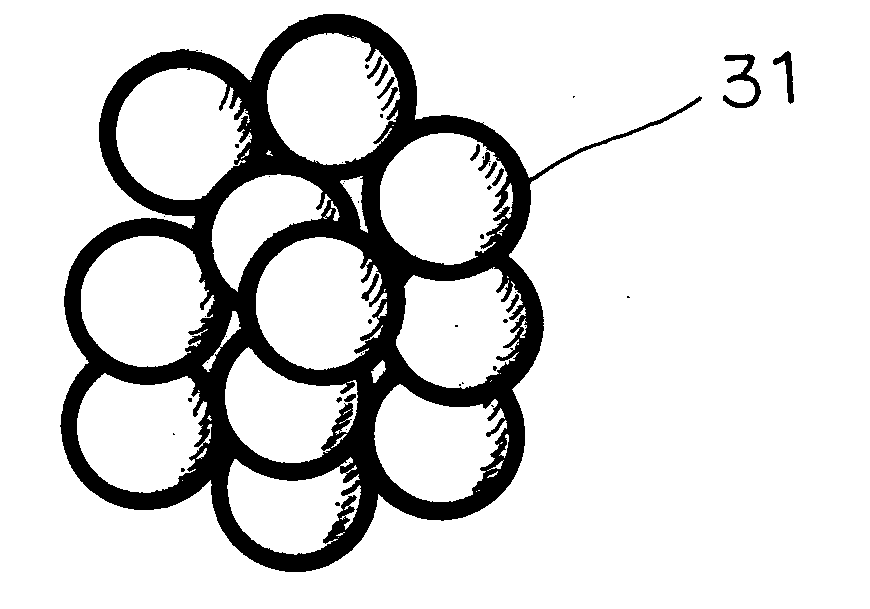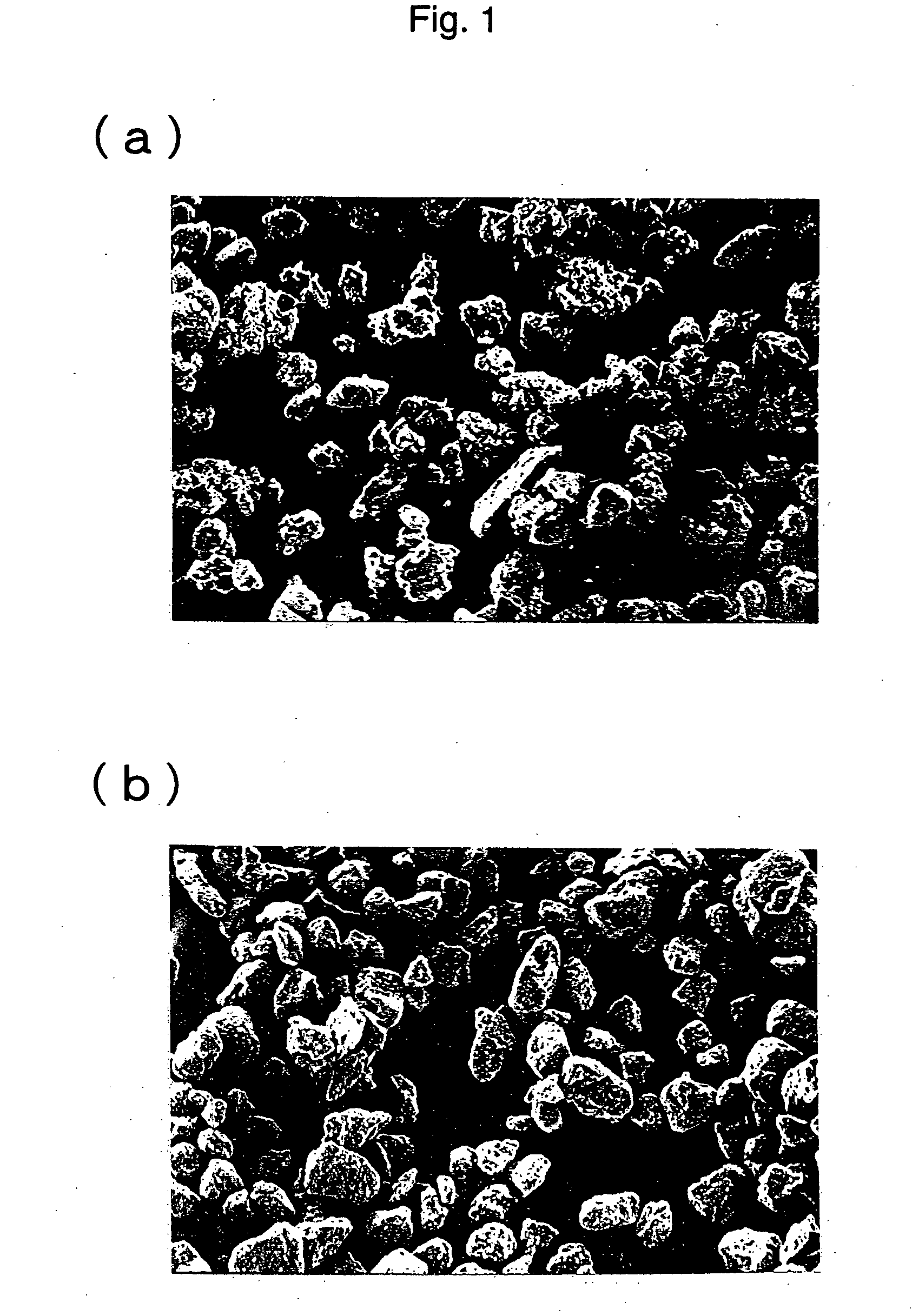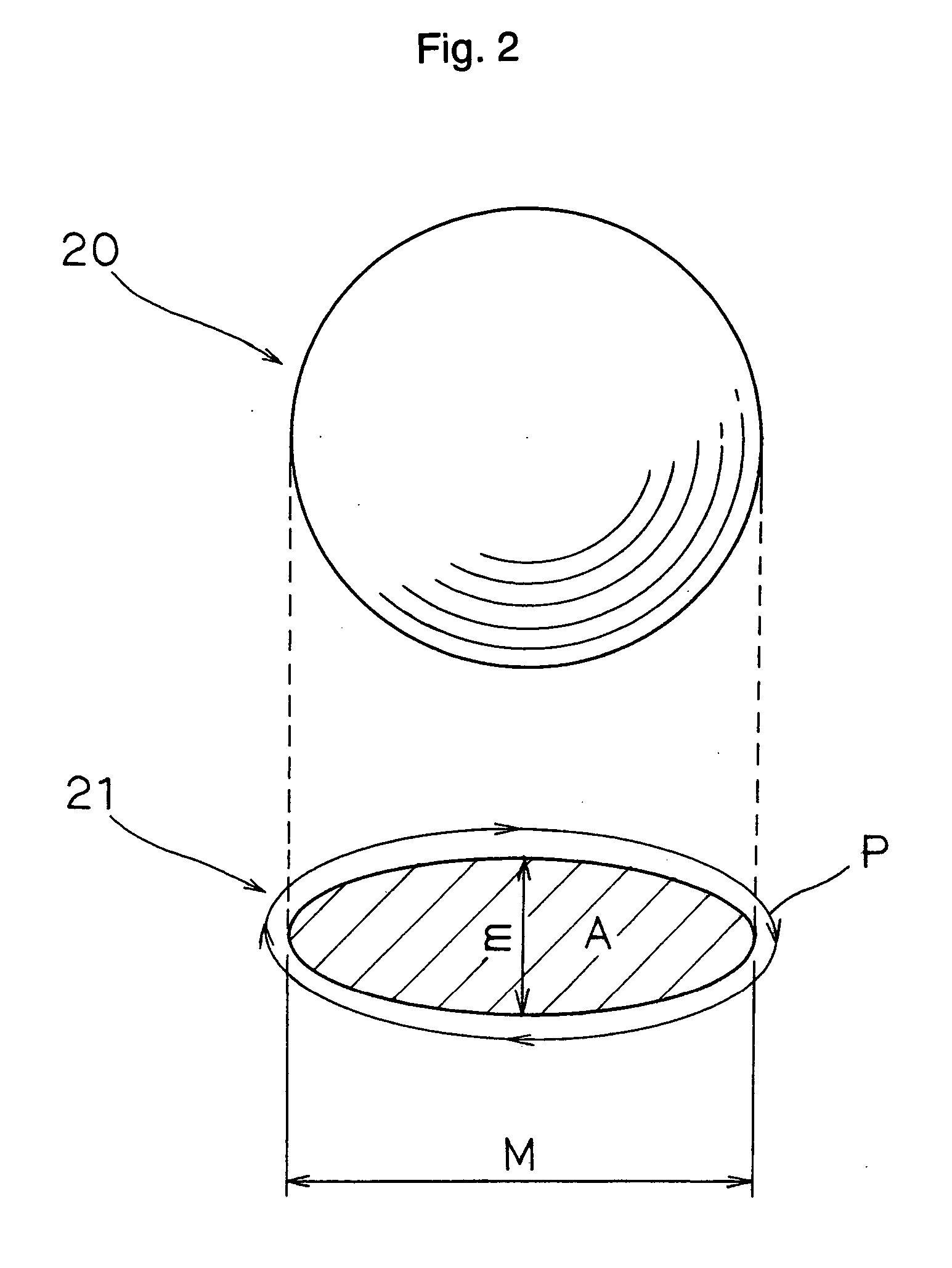Toner coated with thin film
a technology of toner and resin, applied in the field of toner coated with resin thin film, can solve the problems of toner being significantly deteriorated in conveyability, toner being unusable, substrate deterioration, etc., and achieves the effect of less blocking tendency and less coalescing tendency
- Summary
- Abstract
- Description
- Claims
- Application Information
AI Technical Summary
Benefits of technology
Problems solved by technology
Method used
Image
Examples
example 1-1
Thin-Film Coated Toner 1-1
[0295] A thin film coating was applied onto a commercially available black toner 1-1, which was for a two-component developer for flash fixing. The volume average particle diameter of the black toner 1-1 was 8 μm, its softening temperature was 120° C., the binder resin was an ester and the coloring material was carbon black.
[0296] First, a 25 mass % aqueous solution of polyacrylic acid, which had a solution viscosity of 8,000 mPa·s at 25° C., was dissolved in water to prepare an aqueous medium having a pH of 4.5 and a concentration of 5 mass %. One hundred parts by mass of the above-described black toner 1-1 were dispersed at room temperature into 300 parts by mass of the aqueous medium, into which 8.2 parts by mass of hexamethylolmelamine prepolymer (manufactured by Showa Highpolymer Co., Ltd.; product name: Miruben 607) was mixed at room temperature. The resulting room temperature mixture was heated over 20 minutes to 70° C. and subjected to a resinifica...
example 1-2
Thin-Film Coated Toner 1-2
[0302] A thin-film coated toner 1-2 was prepared in the same manner as the thin-film coated toner 1-1, except that a commercially available black toner 1-2 for single component developers comprising magnetite was used in place of the black toner 1-1. The thin-film coated toner 1-2 had particularly good recoverability during centrifugation sedimentation, and had the same or better performance as that of the thin-film coated toner 1-1.
example 1-3
Thin-Film Coated Toner 1-3
[0303] A thin film coating was applied onto a commercially available black toner 1-3, which was for a two-component developer for flash fixing. The volume average particle diameter of the black toner 1-3 was 8 μm, its softening temperature was 70° C., the binder resin was an ester and the coloring material was carbon black.
[0304] First, 300 parts by mass of a 10 mass % ethylene-maleic anhydride copolymer (manufactured by Mosanto; product name: EMA-31), 5 parts by mass of urea and 0.5 parts by mass of resorcinol were mixed together, and the pH was adjusted to 3.2 using aqueous sodium hydroxide. To 300 parts by mass of this solution, 100 parts by mass of the black toner 1-3 were dispersed at room temperature, and then 12.5 parts by mass of formalin were mixed therein at room temperature. The resulting room temperature mixture was heated over 20 minutes to 60° C. and subjected to a resinification reaction for 2 hours, whereby the surface of the black toner 1-...
PUM
| Property | Measurement | Unit |
|---|---|---|
| softening temperature | aaaaa | aaaaa |
| temperature | aaaaa | aaaaa |
| thickness | aaaaa | aaaaa |
Abstract
Description
Claims
Application Information
 Login to View More
Login to View More - R&D
- Intellectual Property
- Life Sciences
- Materials
- Tech Scout
- Unparalleled Data Quality
- Higher Quality Content
- 60% Fewer Hallucinations
Browse by: Latest US Patents, China's latest patents, Technical Efficacy Thesaurus, Application Domain, Technology Topic, Popular Technical Reports.
© 2025 PatSnap. All rights reserved.Legal|Privacy policy|Modern Slavery Act Transparency Statement|Sitemap|About US| Contact US: help@patsnap.com



